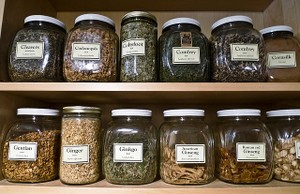In Ayurvedic medicine, health and well being is achieved by living in harmony with others and with the universe and by maintaining a correct balance of vital life energies in the body.
Ayurvedic practitioners believe that there are three types of energies in the body, called doshas. Illness arises out of an imbalance between the doshas and ayurvedic treatments attempt to restore a sense of balance to prevent and treat disease.
Things that skew the doshas out of balance include poor dietary choices, poor lifestyle choices, pollution, relationships with others, aging and other factors.1
The three doshas are:
1. Vata
This is the dosha that controls movement, the nervous system and blood flow. When Vata is out of balance people will experience anxiety and fear. When balanced, they will experience creativity and enthusiasm for life.
2. Pitta
Pitta controls digestion and temperature and other metabolic functions. With an imbalanced pitta dosha people feel anger but with balanced pitta people experience intelligence and contentment.
3. Kapha
Kapha dosha controls immune function and growth. When Kapha is out of balance people experience low self confidence and jealousy but when balanced, people feel loving and compassionate.2
Examples of Ayurvedic Treatments
The treatments you get to restore optimal health and wellness are not related to the condition you have, be it substance abuse, depression or anxiety or any number of physical illnesses.
The treatments you receive will depend instead on your unique imbalance of the doshas and by any disharmony you have with your environment and the people in it. In Ayurvedic medicine, rather than treat the disease or symptoms of illness, these are viewed as signs of imbalance to be eliminated by restoring whole body wellness and balance. By the logic of ayurvedic medicine, there is no one type of treatment for any given condition as 2 people may experience similar symptoms or diseases but have totally different types of imbalances and require totally different types of treatments to restore inner balance and whole body health.3
To understand your personal imbalance of doshas, any Ayurvedic healing program must begin with a comprehensive diagnostic session, which will likely include a medical history, questions about your diet, lifestyle, relationships and environment and an examination of various parts/systems of your body, such as your fingernails, skin, eyes, tongue, your heart (pulse) and abdomen. You may also be asked to provide urine and stool samples and submit to other medical tests.
Based on your unique profile of doshas you will be prescribed a series of treatments designed to restore balance.
Some examples of Ayurvedic treatments include:
- Treatments to remove impurities from the body – treatments such as enemas and deep tissue massages may be used to remove toxins and other impurities from the body.
- Treatments to improve a person’s harmony with the universe – examples of such treatments include exercises to release negative thoughts and emotions and counseling on how to avoid situations that lead to worry or anxiety.
- Treatments to reduce the symptoms of disease – examples of treatments that are used to reduce the severity of disease symptoms include prescribed meditation exercises, dietary changes, spending time lying in the sun, breathing or stretching exercises and herbal medicines or tonics.
- Treatments to reduce susceptibility to disease – herbal tonics and mineral tonics4
Caution – a National Center for Complimentary and Alternative Medicine study of 70 over the counter Ayurvedic medicines in 2004 found that 14 contained lead, mercury or arsenic at levels high enough to be harmful.
Ayurveda as Addiction Treatment
Ayurveda is used to help people overcome addictions to nicotine, alcohol and illicit drugs. There is no one set course of treatment for addiction (as everyone’s balance of doshas is unique) but some common elements of an Ayurvedic addiction treatment program are:
- Therapies to reduce the severity of withdrawal symptoms and to improve overall health and well being, such as cleansing treatments like massage and enemas to remove toxins and impurities from the body.
- Therapies to improve health and disease resistance – such as herbal medicines and dietary changes
- Therapies to improve spiritual health and well being, such as meditation, yoga and others.
- References
Page last updated Sep 28, 2011


